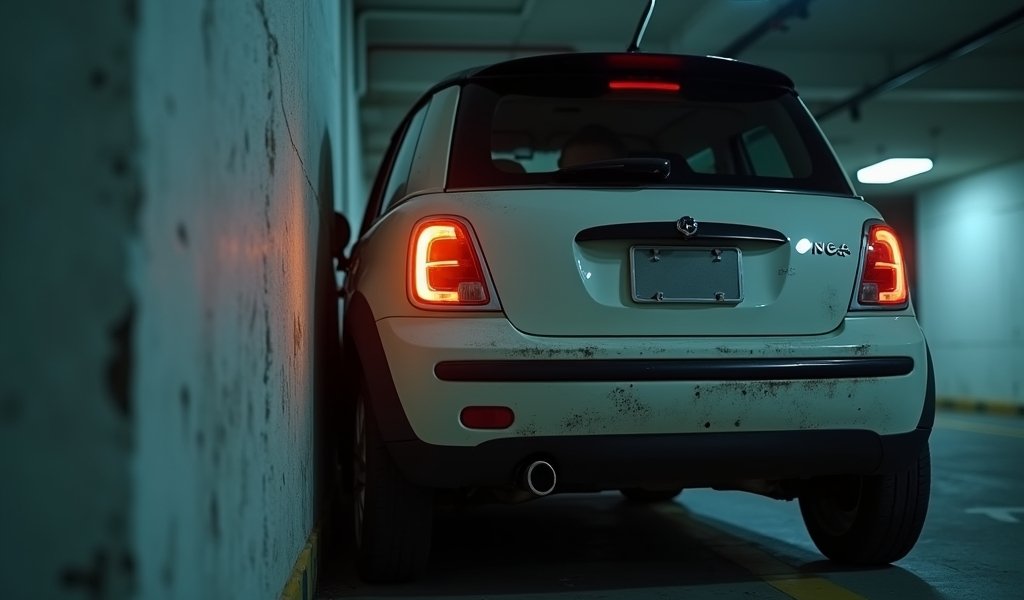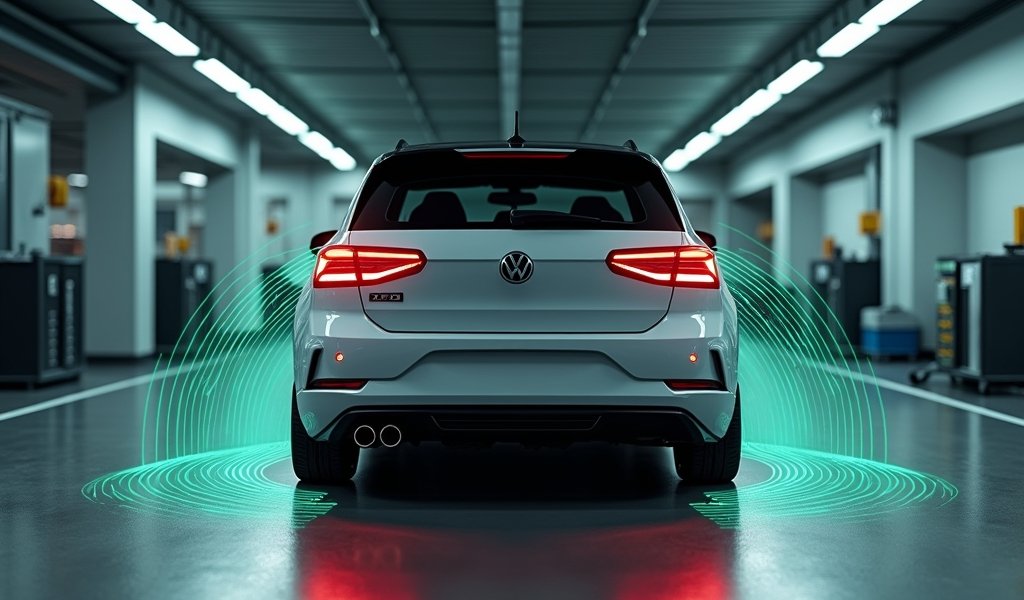Overview
This article provides detailed guidance on adjusting parking sensor distances to accommodate personal preferences and vehicle modifications, covering both built-in adjustment options and DIY methods across different vehicle manufacturers. It balances technical instructions with safety warnings, emphasizing that while customization can improve the driving experience, any modifications should be done carefully to maintain safety and warranty compliance.
Table of Contents
- Understanding Parking Sensors: The Basics
- Why Would You Want to Adjust Parking Sensor Distance?
- Factory Settings vs. Personal Preferences
- DIY Adjustment Methods That Actually Work
- Manufacturer-Specific Adjustment Procedures
- Advanced Parking Sensor Hacks for Tech-Savvy Drivers
- Common Pitfalls to Avoid When Adjusting Sensors
- Legal Considerations and Safety Warnings
- Conclusion
- Frequently Asked Questions
Understanding Parking Sensors: The Basics
Ever backed into a pole that you swear wasn’t there five seconds ago? Or maybe you’ve experienced that heart-stopping moment when your parking sensors scream at you despite being what seems like a football field away from the nearest obstacle? Welcome to the quirky world of parking sensors – those little electronic guardian angels that sometimes feel more like overprotective parents.
Parking sensor distance adjustment isn’t just for the tech geeks or automotive enthusiasts; it’s practical knowledge for any driver who’s tired of false alarms or, conversely, needs a more sensitive warning system. I’ve spent 15 years as a certified automotive technician, and let me tell you – understanding how these systems work can save you both embarrassment and repair bills.
At their core, parking sensors use ultrasonic technology (fancy term for high-frequency sound waves) to detect obstacles. These sensors emit waves that bounce off objects and return to the sensor. The time it takes for this round trip tells your car’s computer how far away the object is. It’s basically the same principle as a bat’s echolocation, except your car doesn’t hang upside down in a cave. At least, I hope it doesn’t.
Most modern vehicles come equipped with between four and eight sensors distributed across your front and rear bumpers. Each sensor has a specific detection range and angle, creating an invisible safety net around your vehicle. When objects enter this detection zone, the system typically provides escalating audible warnings that increase in frequency as you get closer to an object. Some fancier systems also offer visual indicators through your dashboard display or even haptic feedback through the steering wheel or seat.
Why Would You Want to Adjust Parking Sensor Distance?
You might be thinking, “If engineers spent thousands of hours designing these systems, why on earth would I mess with them?” Great question! The factory settings are designed for the average driver in average conditions – but let’s be honest, how many of us are truly “average”?
Perhaps you’ve installed an aftermarket tow hitch that constantly triggers your rear sensors. Maybe you’ve modified your vehicle with custom bumpers or other exterior enhancements that affect sensor placement. Or you could simply be tired of your car panicking when you’re still a comfortable distance from obstacles.
On the flip side, perhaps you’re a new driver who would benefit from earlier warnings, or you regularly navigate tight parking garages where every inch counts. Some drivers with spatial awareness challenges find that more sensitive settings provide the extra confidence they need when parking.
I had a customer once – let’s call him “Nervous Nick” – who had scraped his brand-new BMW three times in his first month of ownership. After we adjusted his parking sensors to give earlier warnings, he hasn’t had a single incident in two years. Meanwhile, “Confident Carol” was going insane with her overly cautious system that wouldn’t let her parallel park without triggering all kinds of alarms. A quick adjustment later, and she was parking with the precision of a surgeon.
The ability to customize collision avoidance systems including parking sensors is about personalizing your driving experience to match your specific needs, vehicle configuration, and driving environment.

Factory Settings vs. Personal Preferences
Let’s talk about those factory settings for a minute. Manufacturers typically set parking sensors to begin warning you when objects are about 5-6 feet away from your vehicle, with the tone becoming continuous at approximately 1-1.5 feet. These settings are designed to work for the broadest possible range of drivers and parking situations.
But here’s where it gets interesting: studies show that individual drivers have vastly different comfort zones when it comes to proximity. According to research published in Accident Analysis & Prevention, driver confidence and spatial awareness can affect perceived safe distances by up to 40%.
Factory settings also don’t account for modifications you might make to your vehicle. Add a bike rack? Install a tow hitch? Congratulations, you’ve just confused your parking sensors! They’re now detecting these extensions as obstacles, leading to false alarms that can drive even the most patient driver to the brink of madness.
Personal preferences matter too. Some drivers prefer earlier warnings to give them more time to react, while others find premature alerts annoying and distracting. Think of it as choosing when your coffee maker starts brewing in the morning – some of us want that pot ready the moment we open our eyes, while others prefer to start the process after we’ve had time to wake up a bit.
The good news is that many modern vehicles allow for some level of customization through their onboard systems. But even if your car doesn’t have built-in adjustment options, there are workarounds and hacks that can help you personalize your parking sensor experience.
DIY Adjustment Methods That Actually Work
Now we’re getting to the good stuff! Let’s explore some proven methods for adjusting your parking sensor distance. I’ll start with the easiest options and work our way up to the more technical approaches.
First, check if your vehicle offers built-in adjustment options. Many newer models allow you to customize parking sensor sensitivity through the infotainment system. Look for settings under “Driver Assistance,” “Parking Aids,” or “Vehicle Settings.” You might find options like “Early,” “Normal,” or “Late” for warning timing, or even specific distance measurements.
If your vehicle doesn’t have built-in customization options, don’t despair! Here are some DIY approaches:
- Use diagnostic tools: OBD-II scanners with advanced capabilities can access parking sensor parameters. Tools like Autel MaxiCOM or high-end Snap-on scanners can often modify these settings, though they come with a steep learning curve (and price tag).
- Dealer programming: Most dealerships can adjust sensor sensitivity using their proprietary diagnostic equipment. This typically costs $50-150 but gives you peace of mind that it’s done correctly.
- Repositioning sensors: For the mechanically inclined, slightly angling sensors can effectively change their detection range. Even a few millimeters can make a noticeable difference in when warnings activate.
- Sensor shields: Creating small shields from non-conductive materials can limit the sensor’s field of view, effectively reducing its detection range for objects that aren’t directly in your path.
One of my favorite tricks for a quick fix involves using removable weatherproof tape. By partially covering a hyperactive sensor with a small strip of waterproof tape, you can reduce its sensitivity without permanent modification. I’ve used this method on dozens of vehicles with great success, especially as a temporary solution while waiting for professional adjustment.
Remember that these adjustments affect your safety systems, so always test thoroughly in a controlled environment before hitting the road. I recommend finding an empty parking lot and using objects like cardboard boxes to test your new settings.
Manufacturer-Specific Adjustment Procedures
Not all parking sensors are created equal, and different manufacturers use different systems with unique adjustment procedures. Let’s break down some manufacturer-specific methods:
For Volkswagen and Audi vehicles, the VCDS (VAG-COM Diagnostic System) is your best friend. This software allows you to access the parking sensor control module and adjust parameters like “Early Warning Distance” and “PDC Volume.” The process involves connecting a laptop to your OBD-II port, navigating to the correct control module (usually 10-Parking Aid or 76-Park Assist), and adjusting the adaptation channels. Specific channels vary by model, but typically channels 1-4 control distance thresholds.
BMW owners can use tools like BMW Scanner or INPA to access their parking sensor modules. Look for the PDC module and adjustment options under “Coding” or “Adaptation.” BMW typically allows for front and rear sensors to be adjusted independently, which is particularly useful if you’ve added aftermarket components to just one end of your vehicle.
For Ford and Lincoln vehicles, the FORScan tool opens up adjustment possibilities. After connecting to your vehicle, navigate to the “Parking Aid Module” (PAM) and look for configuration settings. Newer models often have sliders for “Warning Distance” that can be easily adjusted.
Toyota and Lexus vehicles often require dealer intervention for adjustment, though the Techstream software can provide access if you’re willing to invest. Look for the “Customizing Parameters” section after connecting to the appropriate control module.
General Motors vehicles typically use their Global Diagnostic System (GDS) for such adjustments. The “Personalization” menu often includes parking sensor distance options, especially in higher-end models.
For those with access to professional-grade scan tools like Snap-on VERUS, MODIS, or Autel MaxiSys, most vehicles manufactured after 2015 will have some adjustment capability through the “Special Functions” or “Service Functions” menus. These tools often provide guided procedures specific to your make and model.
When working with blind spot monitoring systems alongside parking sensors, remember that adjustments to one system may affect the functionality of the other, as they often share control modules or calibration parameters.

Advanced Parking Sensor Hacks for Tech-Savvy Drivers
If you’re the type who enjoys diving deeper into automotive electronics and aren’t afraid of a bit of technical tinkering, these advanced hacks might be right up your alley. Fair warning: these approaches require more technical knowledge and carry some risk if done improperly.
One interesting approach for the electronically inclined is installing a variable resistor (potentiometer) in line with specific parking sensors. This can allow on-the-fly adjustment of sensitivity for particular sensors that may be problematic. I’ve seen this work beautifully on vehicles where a single sensor was causing issues due to proximity to aftermarket equipment.
For those comfortable with microcontrollers, creating an Arduino-based interceptor that sits between your sensors and the control module can provide ultimate customization. This approach lets you filter and modify the sensor signals before they reach your vehicle’s computer. While certainly not for beginners, I’ve worked with several engineers who have implemented impressive solutions this way, including situation-aware sensitivity that changes based on location (using GPS) or driving mode.
Another advanced approach involves reprogramming the EEPROM (Electrically Erasable Programmable Read-Only Memory) in the parking sensor control module. This requires specialized equipment and software specific to your vehicle’s manufacturer, but allows for permanent changes to the operating parameters. This is essentially what dealers do, but with more granular control.
Some newer vehicles with advanced driver assistance systems allow for more sophisticated adjustments through their development or engineering menus. These hidden menus are typically accessed through specific button combinations or diagnostic commands. For example, on certain Mercedes models, holding the call button while pressing the OK button five times will access the engineering menu with sensor adjustment options.
Remember that these advanced modifications can potentially affect adaptive cruise control calibration and other integrated safety systems. Always document your original settings before making changes so you can restore them if needed.
Common Pitfalls to Avoid When Adjusting Sensors
Before you dive headfirst into adjusting your parking sensors, let me share some hard-earned wisdom about the pitfalls I’ve seen drivers fall into. Consider this your “what not to do” guide.
First and foremost, never disconnect sensors as a “quick fix” for annoying alerts. I’ve had customers who simply unplugged problematic sensors, only to back into objects they couldn’t see or feel. The temporary relief from beeping isn’t worth the body shop bill.
Be cautious about making extreme adjustments. If you set your distance threshold too far out, you’ll get constant false alarms that will eventually train you to ignore the system altogether. Conversely, if you set it too close, you might not get warnings until it’s too late to stop smoothly.
Avoid making multiple adjustments at once. Change one parameter, test thoroughly, then move on to the next. This methodical approach helps you understand exactly how each change affects performance.
Don’t forget about environmental factors. Parking sensors that work perfectly on dry days might struggle in heavy rain or snow. Make sure your adjustments leave room for these variables, especially if you live in an area with extreme weather conditions.
Watch out for cross-system interference. Modern vehicles have integrated safety systems where adjusting one component (like parking sensors) might affect others (like automatic emergency braking). According to NHTSA guidelines on driver assistance technologies, maintaining proper calibration across integrated systems is essential for safety.
Finally, keep in mind that some vehicles require a recalibration procedure after adjusting sensors. Skipping this step can lead to erratic sensor behavior or false readings. The recalibration procedure typically involves driving the vehicle in specific patterns or exposing sensors to objects at known distances.
Legal Considerations and Safety Warnings
Now, I wouldn’t be a responsible mechanic if I didn’t take a moment to talk about the legal and safety implications of modifying your parking sensors. This isn’t just me being a buzzkill – it’s important information that could save you from headaches down the road.
First, let’s address the warranty elephant in the room. Modifying factory settings can potentially void portions of your vehicle warranty, particularly if those modifications can be linked to damage. Most manufacturers include language in their warranty terms that excludes coverage for problems resulting from “unauthorized modifications.” If you’re concerned about warranty coverage, consider having adjustments done by an authorized dealer.
There’s also the matter of liability. If you significantly alter your vehicle’s safety systems and subsequently have an accident, you could potentially face increased liability, especially if the modifications contributed to the incident. Insurance companies may also have questions if they discover modified safety systems after a claim.
Safety should always be your primary concern. Parking sensors are designed to be a driving aid, not a replacement for attentive driving. Even with perfectly calibrated sensors, you should still use your mirrors and perform visual checks when parking. As the saying goes in the shop, “Trust but verify.”
If you’re making adjustments to accommodate aftermarket equipment like hitches or bike racks, consider whether these modifications are themselves compliant with local regulations. Some jurisdictions have specific rules about equipment that may obstruct sensors or extend beyond vehicle dimensions.
Finally, if you’re planning to sell your vehicle, remember to either document your modifications or return settings to factory defaults. The next owner might not share your preferences, and unexplained behavior from safety systems could complicate the sale.
Conclusion
We’ve covered a lot of ground in our journey through the world of parking sensor distance adjustment, from understanding the basic technology to advanced hacks for the technically inclined. Whether you’re looking to silence an overeager sensor or get earlier warnings for added peace of mind, you now have the knowledge to customize your parking experience to your specific needs and preferences.
Remember that the perfect parking sensor setting is a personal choice – what works brilliantly for one driver might drive another to distraction. The key is finding the sweet spot that provides safety without unnecessary annoyance. That might mean different settings for different drivers in multi-driver households, or seasonal adjustments based on weather conditions.
As automotive technology continues to evolve, these systems will undoubtedly become more sophisticated and customizable. Until then, the methods we’ve discussed can help you take control of your driving experience and make your vehicle work better for your specific situation.
I encourage you to start with the simplest adjustment methods and work your way up as needed. Test thoroughly in safe environments, and don’t hesitate to seek professional help if you’re unsure about any aspect of the process. Your local dealership or a qualified independent mechanic can often make these adjustments quickly and affordably.
Ready to take control of your parking experience? Grab your owner’s manual, head to an empty parking lot, and start experimenting. Your bumpers (and your nerves) will thank you for the personalized approach to parking assistance. Happy adjusting, and may your parking sensors beep only when truly necessary!
Frequently Asked Questions
Can I adjust parking sensors myself without special tools?
Yes, some vehicles allow adjustment through the infotainment system without special tools. For others, you might need manufacturer-specific diagnostic equipment or can try temporary fixes like partial sensor shielding with waterproof tape.
Will adjusting my parking sensors void my warranty?
It might affect warranty coverage for related components if problems can be linked to your modifications. Consider having adjustments done by authorized dealers if warranty preservation is important.
How do I know if my parking sensors need adjustment?
If you’re getting false alarms, warnings that seem too early or too late, or constant alerts after adding aftermarket accessories, adjustment might be beneficial. Test your system in controlled environments to identify specific issues.
Can parking sensors be adjusted differently for front and rear?
Many vehicles allow independent adjustment of front and rear sensor sensitivity. This is particularly useful if you have accessories like a tow hitch that only affects rear sensors.
How often should parking sensor sensitivity be recalibrated?
Recalibration is typically only necessary after sensor replacement, bumper repair, or when adding/removing aftermarket accessories. Seasonal adjustments may be helpful in areas with extreme weather conditions that affect sensor performance.

